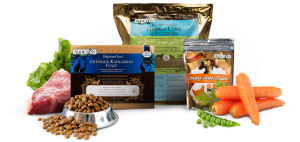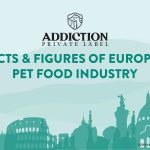2018 is a year worth looking back into, given that a significant number of trends seen this year are likely to impact the pet food industry in the coming years.
For one, the humanization of the pet food manufacturing industry has given birth to a whole new line of pet-related products and services, from pet food that likens gourmet meals to therapy and recreational activities, which manufacturers now need to grapple with, and the pet landscape has never been the same since.
Add the growing clamor from pet owners for high-quality, premium food that uses organic and natural ingredients, and the pet food market is all set to go beyond 2017’s US$94 billion estimated net worth.
Nonetheless, manufacturers are both excited and cautious of the coming months because undoubtedly these trends seem to be here for the long haul.
2018 Trends: Beyond Just Pets
Given the humanization of the pet food industry that well-established itself this year, it wasn’t surprising that many of the trends for 2018 anchored itself on providing near human-like products and services.
Pet food preparation and ingredients
Preparation and ingredient selection for pet food in 2018 saw the introduction of more air-dried raw food, to add to the existing freeze-dried and dehydrated raw pet food products, as well as savory treats in the form of soups or bone broths.
Raw food trends also included the inclusion of even more organs in pet food including kidneys, brain, gonads and skin, and exploring new ‘superfoods’ for pets like mushrooms, which have been found to prevent disease and regenerate certain cells.
The use of novel meats made its way into the mainstream, with many customers attesting to their hypoallergenic and gastrointestinal properties, which had manufacturers take more notice on protein meats such as venison, brushtail, unagi, kangaroo and king salmon, to name a few.
Functional foods, particularly plant-based pet food, have also made their way into the aisles, given the growing demand for vegetarian options especially for pets with special dietary requirements and digestion issues. Nutrient supplementation also trended this year.
Overweight pets
There had been a growing concern for overweight pets this year, coupled with the demand to allow pets to thrive across their life stages, instead of just fulfilling their nutritional needs.
A recent study in the US confirmed past research that many pets, like humans, are overfed and are tempted to consume low-nutrient treats while living sedentarily lifestyles.
Manufacturers addressed this by exploring plant and animal-based proteins that have less carbohydrates and lower glycemic indexes, tapping into a whole new market altogether.
Greater ingredient and packaging transparency
This year saw the insistence from consumers for manufacturers to become more transparent with the ingredients that they use to produce pet food and the claims that they print on their packaging.
Likely brought about by growing concerns among pet owners over pet food intolerance and allergies, manufacturers have been compelled to address these concerns, which led to more hypoallergenic pet food blends made available in the market.
This year saw the rise of more gluten-free, Omega 3 fatty acids rich and grain-free pet food catering to a ballooning market of hypoallergenic pet food.
New markets
Emerging markets have also shaped the directions for the pet food industry this year.
Most prominent and sought after in recent years, China’s pet food industry grew at a rate of 6.3% in 2010 and jumped to 21% by 2017 (GfK & NBS Asia), compared to the US growth rate of 5% annually since 2002.
With its 73.55 million pet owners across the country, China’s pet food sales were projected to grow by 27% by end-2018, year-over-year.
Although China’s Ministry of Agriculture and Rural Affairs issued updated policies regarding pet food manufacturing and distribution to the country, it has not deterred manufacturers and distributors from exploring partnerships that would make it easier for them to access this growing market.
The Year Ahead
At Addiction Foods Private Label, we understand the challenges that manufacturers encounter in keeping up with the growing consumer demands for the global pet food market.
We believe that all pets deserve the highest quality of pet food designed to nourish and to keep them healthy throughout their life stages.
That’s why Addiction Foods stays committed to the responsible production of all pet foods to meet the stringent industry guidelines and policies across all target markets, regardless of the trends that come and go.
Our list of services and wide range of products provide manufacturers myriad choices for their various market segments.
Visit Addiction Foods Private Label at https://privatelabel.addictionpet.com/ to find out how you can produce and distribute your own pet food brand through us.












